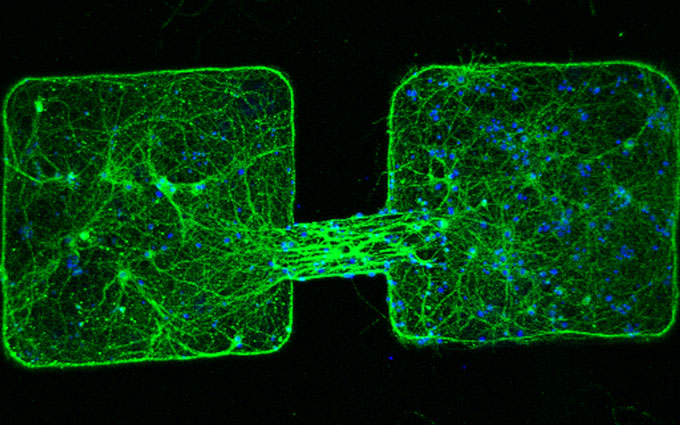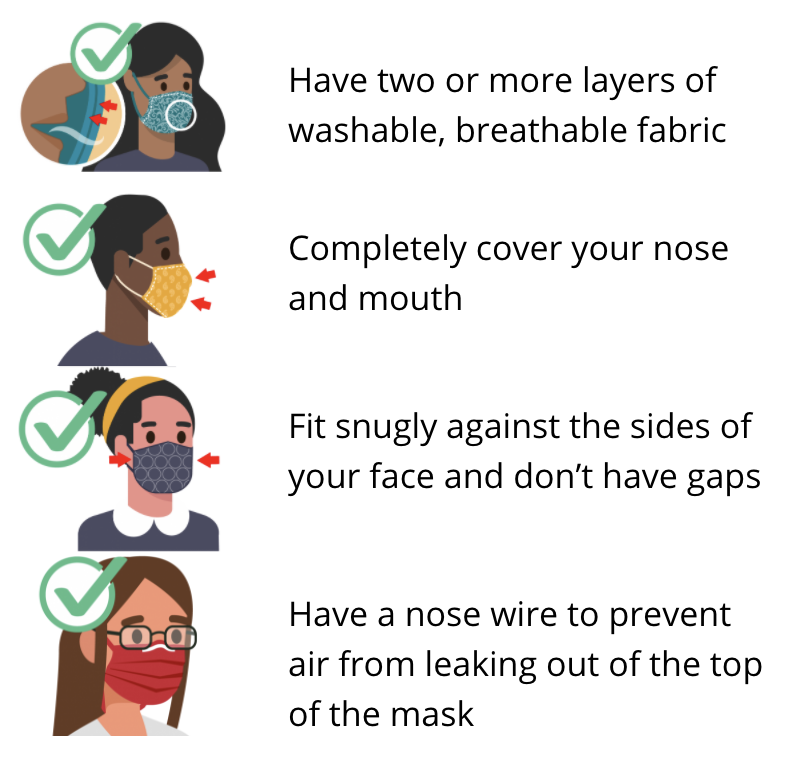ESTI's goal is to provide you with accurate information on science, technology, and health. Happy reading!
In this Issue:
MythBusters: Neurons Communicate Using Chemical & Electrical Signals
Neuro News: Using CRISPR to Create Neanderthal-like Brain Organoids
Tech News: Using Microbots to Bridge Nerve Cells
This Month in Science: NASA's Search for Life on Mars
Health: Wearing Better Masks Can Reduce Transmission Dramatically
|
|
MythBusters:
True: Neurons Communicate Using Chemical and Electrical Signals
|
The cells in our brain that make us who we are called neurons, and neurons communicate with one another constantly to compute our thoughts. Neurons have three parts: (1) the cell body, (2) an axon, and (3) dendrites. The cell body stores genetic information (such as DNA). The axon is used to send signals to other neurons, and the dendrites receive signals from other neurons.
Besides sending out signals to other neurons in the brain, neurons will also send signals to other parts of the body (when you're walking, moving different limbs, etc.). When a neuron wants to communicate with another neuron, it sends an electrical signal (also known as an action potential) that turns into a chemical signal when it travels across the synapse (small gaps between neurons) to another neuron. The chemical signal then contributes to triggering an action potential in the receiving neuron. Repeated signals between neurons strengthens the connection between them.
For more information about how neurons communicate, check out this article.
|
|
|
Neuro News:
Using CRISPR to create Neanderthal-like Brain Organoids
|
Using CRISPR, a genome editing tool, neuroscientist Alysson Muotri was able to create brain organoids that give us some understanding of the brains of our closest relatives, Neanderthals and Denisovans.
Brain organoids are brain-like tissue that are grown in a laboratory using human stem cells. Previous research has shown that many humans today carry genes that were also carried by our ancient relatives, such as Neanderthals and Denisovans. One of these genes is NOVA1, which is involved in forming brain synapses (nerve junctions), and is also associated with neurological disorders when its activity is changed. Therefore, in order to understand how human brain development differs from that of our ancestral relatives, researchers altered the NOVA1 gene to match those of our ancestors.
When the controlled gene mutation of NOVA1 occurred, researchers discovered a huge change in the shape of the brain organoids. Before mutation, the organoids had a smooth, spherical shape, but, after the mutation, the organoids had rough, bumpy edges, and a popcorn texture (see images below).
Even though researchers don't fully understand the implications of this change as it relates to function, this dramatic change in shape and texture gives researchers hope in understanding our evolutionary history.
For more information about this new discovery, check out this article.
|
|
|
Tech News:
Using Microbots to Bridge Nerve Cells
|
Communication is key, and microscopic robots can help in opening communication between groups of nerve cells. Engineers Eunhee Kim and Hongsoo Choi from the Daegu Gyeongbuk Institute of Science and Technology in South Korea have built the first robots that are only 300 micrometers long (1 micrometer is 1000 times smaller than 1 millimeter).
The rectangular robots have slender horizontal grooves lined on top to allow nerve tendrils to grow and connect to other groups of cells. Using rat nerve cells, these researchers discovered that the microbots coaxed the nerve cells to grow into the grooves and begin sending messages to one another.
With these microbots acting as bridges, this has the potential to further research in helping people with nerve injuries.
For more information, check out this article.

|
|
|
This Month in Science:
NASA's Search for Life on Mars
|
On February 18th, NASA's rover, Perseverance, landed on Mars inside the pit of the Jezero Crater. NASA's goal is for the rover to explore an area of Mars that hasn't been explored yet and collect samples for astronauts to later bring back to Earth for examination.
Another goal for NASA is to answer that age-old question about whether there was life on Mars at some point in history. Jezero Crater is the perfect place to start because NASA believes that it was a much warmer and wetter place, possibly a large lake. Perseverance will travel along the crater floor and edges collecting samples in the hopes that researchers will find evidence of organic matter.
Perseverance will spend only one Mars year (equivalent to a little less than two Earth years). If it takes the predicted route through the crater, then it would have traveled more than 15 kilometers and collected 15-20 tubes of rock of various types.
Check out this video on the Jezero Crater landing site!
For more information and a visual guide of Perservance's journey, check out this article.
|
|
|
Health:
Wearing Better Masks Can Reduce Transmission Dramatically
|
As the coronavirus is transmitted between people, it can mutate, causing slight variations in the copies of the virus. Mutations are fairly common but sometimes the mutations make the virus more effective at infecting more hosts, or better at staying in the host for a long period of time. Some mutations of the coronavirus are thought to be more transmissible than the initial, widespread version of the virus.
While people are slowly getting vaccinated, stopping the spread is still the most important thing to do and evidence has shown that wearing masks is the best way to go, but wearing a mask that fits well is now even more important.
If a mask fits loosely on your face, particles can still escape through gaps of the mask (see image below). However, if the mask fits snugly on your face and you're wearing multiple masks (double mask-wearing does not apply to the N95 or KN95 masks), reducing the amount of gaps, this reduces transmission from 64% to 83%. This is a dramatic difference and can help slow the spread of COVID-19 before it has a chance to create new variants.
Check out our site for how to choose a better mask.
For more information, check out this article.

|
|
|
Get in Touch: Get Familiar with Your Technology
|
|
|
|
|
|

